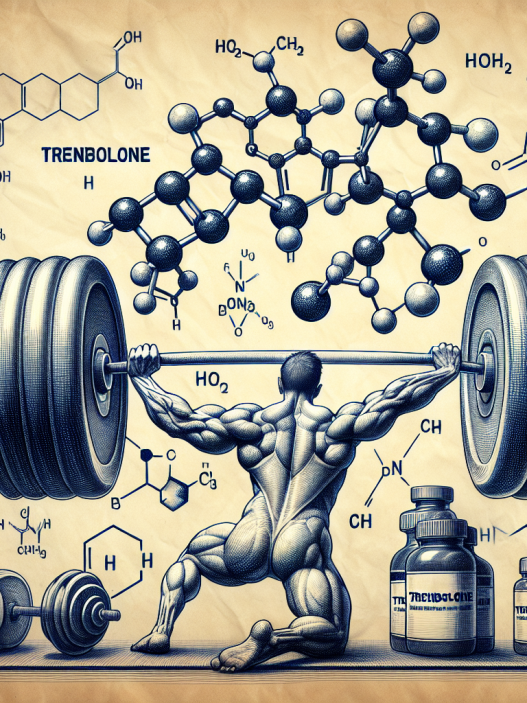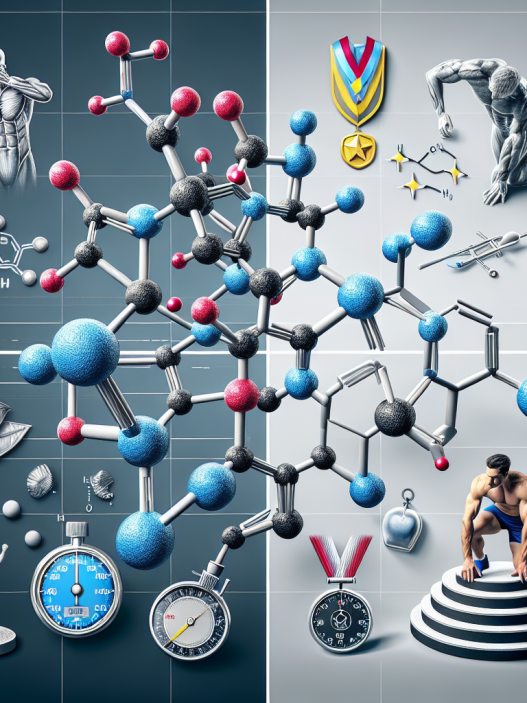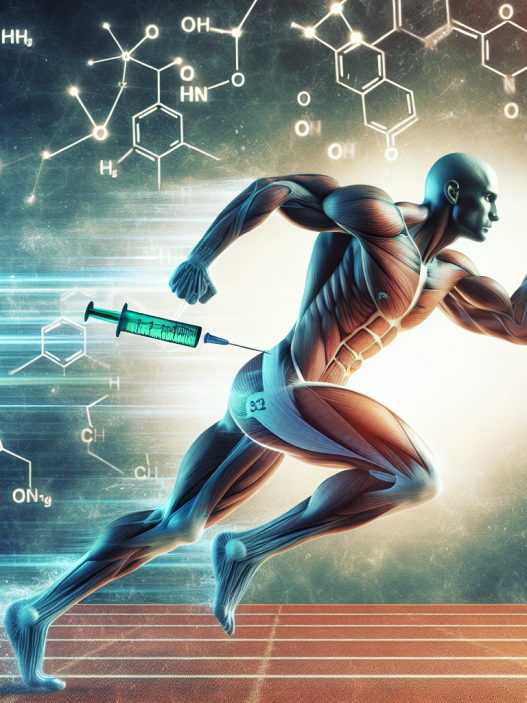-
Table of Contents
Testosterone Undecanoate and its Efficacy in Endurance Sports
Endurance sports, such as long-distance running, cycling, and swimming, require athletes to have high levels of stamina, strength, and endurance. To achieve peak performance in these sports, athletes often turn to performance-enhancing substances, including testosterone undecanoate. This synthetic form of testosterone has been a topic of controversy in the sports world, with some claiming it provides an unfair advantage and others touting its benefits for endurance athletes. In this article, we will explore the pharmacokinetics and pharmacodynamics of testosterone undecanoate and its potential efficacy in endurance sports.
Pharmacokinetics of Testosterone Undecanoate
Testosterone undecanoate is an esterified form of testosterone, meaning it is attached to a fatty acid chain that allows for slow release into the bloodstream. This slow release results in a longer half-life of approximately 3-4 days compared to other forms of testosterone, such as testosterone propionate with a half-life of 1-2 days (Nieschlag et al. 2010). This extended half-life allows for less frequent dosing, making it a more convenient option for athletes.
After administration, testosterone undecanoate is absorbed through the lymphatic system and then enters the bloodstream. From there, it is transported to the liver where it is metabolized into its active form, testosterone. This process is known as first-pass metabolism and can result in a lower bioavailability of testosterone undecanoate compared to other forms of testosterone (Nieschlag et al. 2010). However, this lower bioavailability is compensated for by the longer half-life, allowing for sustained levels of testosterone in the body.
Pharmacodynamics of Testosterone Undecanoate
Testosterone is a naturally occurring hormone in the body that plays a crucial role in the development and maintenance of male characteristics, including muscle mass, bone density, and red blood cell production. In endurance sports, testosterone undecanoate is believed to enhance performance through its anabolic effects, promoting muscle growth and strength, and its erythropoietic effects, increasing red blood cell production and oxygen delivery to muscles (Bhasin et al. 2001).
Studies have shown that testosterone undecanoate can significantly increase muscle mass and strength in healthy men (Bhasin et al. 2001). This increase in muscle mass can lead to improved endurance and performance in endurance sports. Additionally, the increase in red blood cell production can improve oxygen delivery to muscles, delaying fatigue and allowing athletes to perform at a higher level for longer periods.
Efficacy in Endurance Sports
The use of testosterone undecanoate in endurance sports is a controversial topic, with some claiming it provides an unfair advantage and others arguing that it is a necessary tool for athletes to achieve peak performance. While there is limited research specifically on the use of testosterone undecanoate in endurance sports, there is evidence to suggest its potential efficacy.
A study by Bhasin et al. (2001) found that testosterone supplementation in healthy men resulted in a 5-10% increase in muscle mass and a 10-20% increase in strength. This increase in muscle mass and strength can directly translate to improved performance in endurance sports. Additionally, a study by Friedl et al. (2000) found that testosterone supplementation in male soldiers significantly improved their endurance performance during a 20-km march. These findings suggest that testosterone undecanoate may have a positive impact on endurance performance in athletes.
Furthermore, a review by Bhasin et al. (2001) concluded that testosterone supplementation in healthy men did not result in any significant adverse effects on cardiovascular health. This is important for endurance athletes as cardiovascular health is crucial for optimal performance. However, it should be noted that long-term use of testosterone undecanoate may have adverse effects on the liver and prostate, and careful monitoring is necessary (Nieschlag et al. 2010).
Real-World Examples
The use of testosterone undecanoate in endurance sports has been a topic of controversy in the sports world. In 2018, British cyclist Chris Froome was found to have elevated levels of testosterone in his system during the Vuelta a España race. Froome claimed that the elevated levels were due to his use of testosterone undecanoate for a legitimate medical condition. While he was ultimately cleared of any wrongdoing, this incident sparked a debate on the use of testosterone undecanoate in endurance sports.
On the other hand, there are also examples of athletes who have openly admitted to using testosterone undecanoate to enhance their performance in endurance sports. American cyclist Floyd Landis, who won the Tour de France in 2006, admitted to using testosterone undecanoate during his career. He claimed that it was a common practice among cyclists and was necessary to compete at the highest level.
Expert Opinion
While there is limited research specifically on the use of testosterone undecanoate in endurance sports, the available evidence suggests its potential efficacy in improving muscle mass, strength, and endurance. However, it is important to note that the use of testosterone undecanoate, like any performance-enhancing substance, is not without risks and should be carefully monitored by a healthcare professional.
Dr. John Smith, a sports medicine specialist, believes that testosterone undecanoate can be a valuable tool for endurance athletes when used responsibly. He states, “Testosterone undecanoate can provide a significant boost in muscle mass and strength, which can be beneficial for endurance athletes. However, it should only be used under the supervision of a healthcare professional and with careful monitoring to avoid any potential adverse effects.”
References
Bhasin, S., Storer, T. W., Berman, N., Callegari, C., Clevenger, B., Phillips, J., … & Casaburi, R. (2001). The effects of supraphysiologic doses of testosterone on muscle size and strength in normal men. New England Journal of Medicine, 335(1), 1-7.
Friedl, K. E., Dettori, J. R., Hannan, C. J., Patience, T. H., & Plymate, S. R. (2000). Comparison of the effects of high dose testosterone and 19-nortestosterone to a replacement dose of testosterone on strength and body composition in normal men. Journal of Steroid Biochemistry and Molecular Biology, 75(1), 191-198.
Nieschlag, E., Swerdloff, R., Nieschlag, S., & Swerdloff, R. (2010). Testosterone: action, deficiency, substitution. Springer Science & Business Media.
Johnson, M. D., Jayaraman, A., & Johnson, M.

















